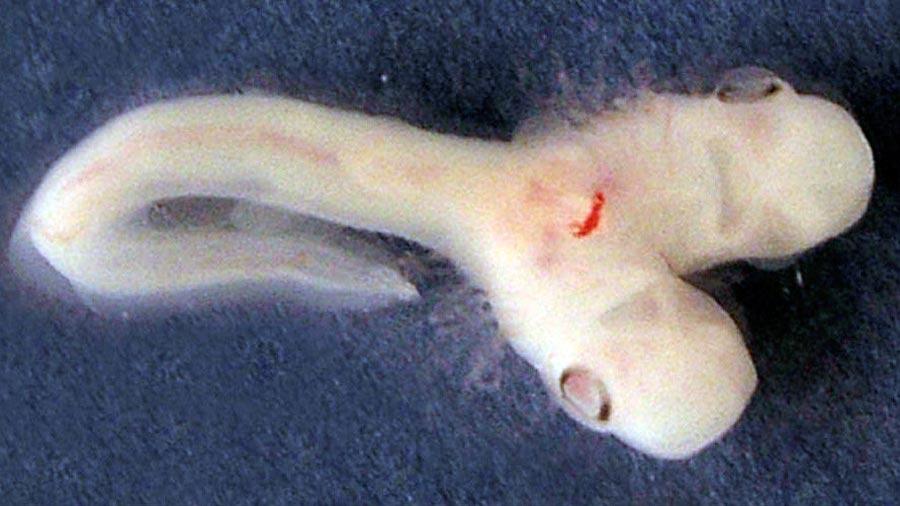From 2005 to 2011, a group of scientists from the University of Malaga gathered embryos obtained from gravid female shark had been caught by fishing vessels in the Alboran Sea and the Gulf of Vera.
A total of 797 embryos collected were kept in the laboratory, aquariums subject to the same controlled environmental conditions without exposing agents that could cause birth defects. The aim was to study the cardiovascular development.
But scientists were struck by an egg in particular: within the transparent capsule where they complete their development to hatch- and through which researchers can follow the stages sucesivas- observed a rare specimen. It was a two – headed embryo belonging to the species Galeus atlanticus , a representative of the same family as the dogfish.
“The we drew carefully inside the capsule and therefore subjected to anesthetic overdose for slaughter and processing for examination by histological techniques , ” explains to SINC Ana Carmen Duran, lead author of the paper published inJournal of Fish Biology and researcher in the department of Animal Biology at the university of Malaga.
According to scientists, the finding is exceptional because it is the first time this malformation is described in a kind of oviparous shark, that is, in a species that deposited free eggs in the marine environment.
A genetic malformation
The shark embryo had two heads, with their eyes, brains, mouths, notocordas (cell cord) and five gill slits on each side- two hearts, two gullets, two stomachs, two livers, but a single intestine with a valve spiral. The two heads merged after the gills.
In the case of this embryo Galeus atlanticus not clear the causes of the malformation. “They have put forward different factors, such as genetic predisposition, virus infections, metabolic disorders or alterations of the environment, as possible causes of dicefalia” indicates Duran.
However, the egg was maintained with a high number of embryos in the laboratory under identical environmental conditions. “The fact that only detected a case of bicefalia suggests that the most plausible is that the cause is genetic in nature,” says the researcher.
Moreover, the team known whether this two-headed specimen could complete their development to hatch and survive in the wild. “We decided to sacrifice when they detect, in doubt that there were to complete the development. The truth is that there is no record of an adult bicéfalo of a shark belonging to an oviparous species, “emphasizes the expert.
Bicefalia cases of shark are very rare. So far only they have been seven two-headed shark embryos, similar to those found in the Mediterranean, ie with two heads and one body. In addition it has been detected only one case of diprosopia (two faces on one head) on sharks.











